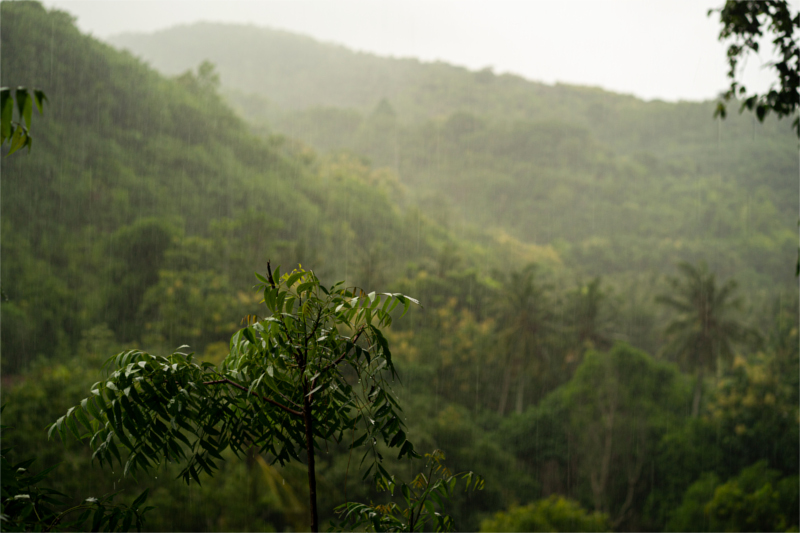Climate zones in Costa Rica
Costa Rica, a land of stunning landscapes and unparalleled biodiversity, is a country that encapsulates a world of climatic diversity within its relatively small borders. With a geographical location straddling the tropics and two coastlines – one facing the Caribbean Sea and the other the Pacific Ocean – Costa Rica boasts a remarkable array of climate zones. These zones play a pivotal role in shaping the country’s ecosystems, supporting its unique flora and fauna, and offering an extraordinary range of experiences to its visitors. Let’s embark on a journey to understand the diverse climate zones that make Costa Rica a natural wonder.
- Tropical Lowlands:
Stretching along the sun-kissed coasts, the tropical lowlands of Costa Rica create a haven for those seeking warmth, vibrant culture, and relaxation. With average temperatures ranging from 75°F to 95°F (24°C to 35°C), these regions are characterized by their hot and humid climates. The northern Pacific coast, known as the Guanacaste region, boasts golden beaches and dry tropical forests. Visitors can immerse themselves in water sports, lounge on the shores, or explore the distinct flora and fauna of this region.
On the Caribbean coast, where humidity meets the lush landscapes, a tropical paradise of rainforests and exotic species awaits. With slightly cooler temperatures due to the influence of the Caribbean Sea, this region experiences more rainfall, nurturing some of the most diverse ecosystems on Earth.
- Central Valley:
Transitioning from the coasts to the heart of the country, the Central Valley welcomes visitors with a temperate climate and breathtaking views. This region, which includes the capital city of San José, boasts an elevation ranging from 2,800 to 4,000 feet (850 to 1,220 meters). As a result, the Central Valley enjoys milder temperatures averaging between 65°F to 80°F (18°C to 27°C) throughout the year.
The Central Valley’s fertile volcanic soils have made it a hub for agriculture, playing a crucial role in the country’s economy. Coffee plantations thrive in this climate, capitalizing on the combination of altitude and temperature to produce some of the world’s finest coffee beans.
- Cloud Forests:
Ascending to higher altitudes, one discovers the ethereal realm of Costa Rica’s cloud forests. Found at elevations of 4,000 to 8,000 feet (1,220 to 2,440 meters), these forests are shrouded in mist and mystery. With average temperatures ranging from 50°F to 70°F (10°C to 21°C), these forests have a unique climate characterized by constant humidity and the presence of clouds.
Monteverde, a globally renowned cloud forest destination, captivates visitors with its biodiversity and enchanting landscapes. The dense vegetation, vibrant orchids, and elusive quetzals – a majestic bird revered by the ancient Maya – create an otherworldly experience that feels like stepping into a fairy tale.
- Highland Zones:
Continuing the ascent into the highlands, Costa Rica’s highland zones beckon with their cooler climates and spectacular vistas. Regions like the Talamanca Mountains, where elevations exceed 8,000 feet (2,440 meters), offer temperatures ranging from 45°F to 65°F (7°C to 18°C). The Talamanca Mountains are home to the country’s highest peak, Cerro Chirripó, and showcase diverse ecosystems, including subalpine forests and páramos, unique alpine tundras.
The highlands provide refuge to numerous species adapted to the challenging conditions, offering a glimpse into the tenacity and resilience of life in extreme environments.
- Rainforests and Wetlands:
Costa Rica’s climatic tapestry also includes expansive rainforests and vital wetlands. The Osa Peninsula, with its heavy rainfall and lush rainforests, has earned a reputation as a biological treasure trove. It supports an astounding variety of species, making it a hub for researchers and nature enthusiasts.
Wetlands, like those found in the Tortuguero National Park, provide critical habitats for aquatic species and sea turtles. These interconnected waterways and lagoons showcase the intricate relationships between land and water.
In the embrace of Costa Rica’s diverse climate zones, nature thrives in a symphony of forms and colors. From the tropical lowlands to the enchanting cloud forests and the challenging highland zones, each climate zone contributes to the intricate web of life that makes this country a true gem of biodiversity.
These climate zones don’t merely shape the physical landscape; they also offer endless opportunities for exploration, education, and adventure. Whether you’re seeking the warmth of the beaches, the mystery of misty cloud forests, or the resilience of highland species, Costa Rica’s climate zones promise an unforgettable journey through nature’s masterpieces. As you traverse these diverse landscapes, you’ll find yourself immersed in a living testament to the wonder and complexity of our planet’s ecosystems.


 +1 888-818-2097
+1 888-818-2097
 +506 8932-4731
+506 8932-4731